Communism and Dictatorship in North Korea
The terms “communism” and “dictatorship” have often been associated with repression and authoritarianism. Defining these terms will help better frame the system currently in play in North Korea.
A dictatorship is a form of government where absolute power is concentrated in the hands of one person or a small group in the form of absolute monarchies, military dictatorships or one-party states without constitutional limitations.
Communism aims to establish a classless society where the means of production are owned communally. The ultimate goal of this sociopolitical and economic ideology called communism is to distribute goods and services according to individual needs, without the presence of money or state. This concept is rooted in the works of Karl Marx and Friedrich Engels, who envisioned a society where workers have control and there is no class hierarchy.
NORTH KOREA’S WAY OF RULING
The hermit kingdom’s current form of governance, which uniquely blends communism and dictatorship, was established through a series of historical and political developments. The formation of the North Korean Bureau of the Communist Party of Korea in 1945 was a crucial step towards the country’s adoption of communism. However, it was not until 1949 when North Korea was recognized as a full-fledged Communist state.
Timeline:
1945 - North Korean Bureau of the Communist Party of Korea formed
1948 - the Democratic People’s Republic of Korea (“DPRK”) established
1949 - North Korea recognized as a Communist state
North Korea adopted its form of dictatorship with the establishment of the Democratic People’s Republic of Korea (“DPRK”) on September 9, 1948. This marked the beginning of its status as a dictatorship under its founder, Kim Il-sung. Kim became the first premier of the North Korean communist regime and later the chairman of the Korean Workers’ Party, ruling the country until his death in 1994. He played a pivotal role in shaping North Korea into a dictatorship through several key actions:
First, Kim established control over the northern half of the Korean peninsula after World War II with the support of the Soviet Union, and the liberation from Japanese colonial rule.
Second, Kim consolidated his power by forming the Korean Workers’ Party and becoming its leader, while building a strong military presence with the Korean People’s Army, supplied with Soviet equipment.
Third, Kim isolated and removed political opponents, ensuring his unchallenged rule. He created a network of labor camps to “re-educate” those who opposed his ruling, thereby declaring the Kim Il-sung Thought (a mix of Marxism-Leninism and Juche ideology focused on self-reliance) as the country’s official ideology. Periodic purges of leadership were also deployed to create a sense of instability and unpredictability for the elites, thereby allowing the leader to maintain his hold on power.
In 2013, current ruler Kim Jong-un executed his uncle, Jang Song-thaek, who had spoken dejectedly about people dying of hunger back home during his frequent trips abroad. Jang was seen by some as “the only person there who could have helped the country introduce reform and openness.”
Kim Il-sung developed a significant cult of personality that elevated him to a god-like status within the country in order to maintain his absolute rule. Furthermore, Kim laid the foundation for dynastic succession, which ensured that the regime would pass its power down to his son, Kim Jong-il, and subsequently to his grandson, Kim Jong-un, the current leader of the DPRK.
Through these measures, Kim Il-sung established a totalitarian regime that controlled the country, from the economy to the media, and ensured that the rule of his family would continue unopposed. The regime has, to this date, maintained its power through a distinctive way of ruling and a combination of ideological indoctrination, surveillance and repression of dissent that guarantees the supreme leader full control of all aspects of North Korean life.
COUNTRIES SIMILARLY UNDER COMMUNIST RULE
At the time of this writing, there are four countries that are under similar communist rule as North Korea. These countries have in common a one-party system where the communist party has a central role in governance, a state-controlled economy and varying degrees of authoritarian rule.
China: China became a communist country in 1949 when Mao Ze-dong proclaimed the nation as the People’s Republic of China. While China has implemented economic reforms and opened up to global markets, it remains under the rule of the Communist Party of China (“CPC”). Like North Korea, although other political parties do exist in China and open elections are held locally throughout the country, the CPC maintains control over all political appointments and there is little opposition against the ruling party.
Cuba: Cuba is a communist state that has also experienced economic challenges and embargoes, similar to North Korea. Since Cuba became a fully communist country in 1965, it developed close ties with the Soviet Union when the U.S. imposed a ban on all trade with Cuba. The country was later forced to establish fresh trade relations with China, Bolivia and Venezuela when the Soviet Union collapsed in 1991. However, Cuba has been gradually reforming its economy and opening up to foreign investment.
Laos: The Lao People’s Democratic Republic is a one-party socialist republic that follows a communist framework. The country’s monarchy, which dates to the 1300s, shared power with the communist party on-and-off through the 1960s and 1970s. The communists took complete control in 1975 following a revolution supported by Vietnam and the Soviet Union, during which members of the royal family were sent to “re-education camps,” where many had reportedly died of hunger and disease.
Vietnam: Vietnam was partitioned in 1954 following the First Indochina War, with the northern region becoming communist with the support of the Soviet Union and the south becoming democratic with the support of the U.S. Vietnam was later unified in 1976 and became one communist country. Like China, it has embraced market reforms while maintaining a one-party system.




